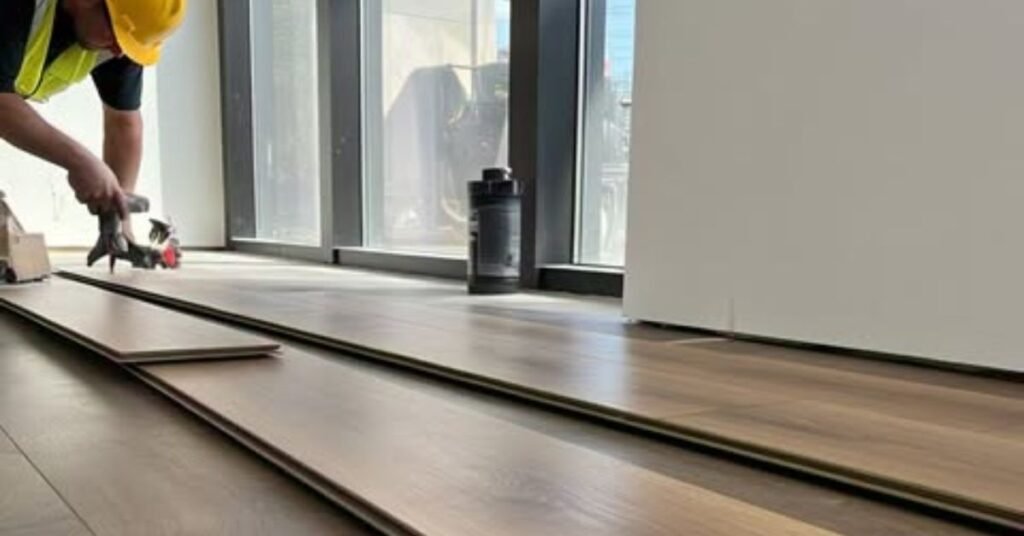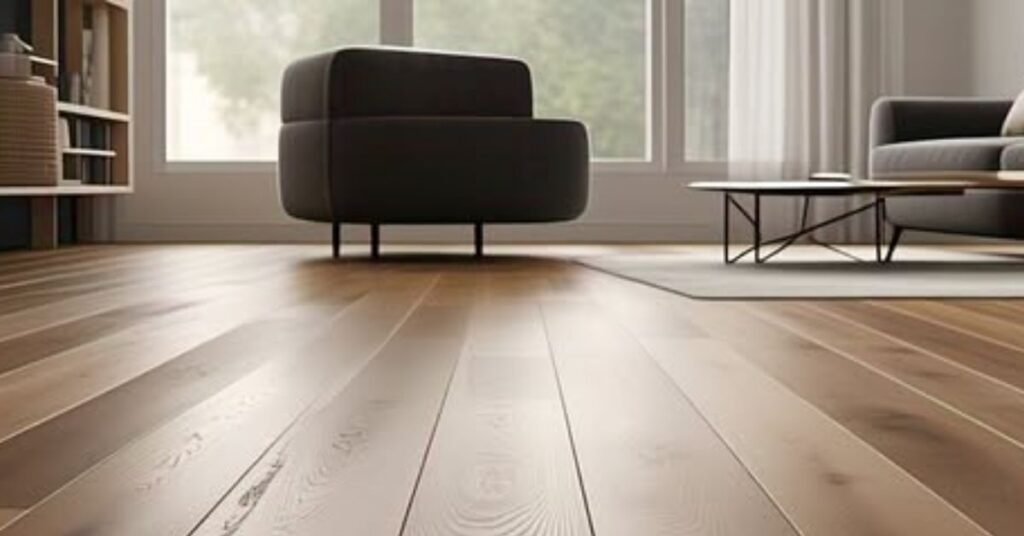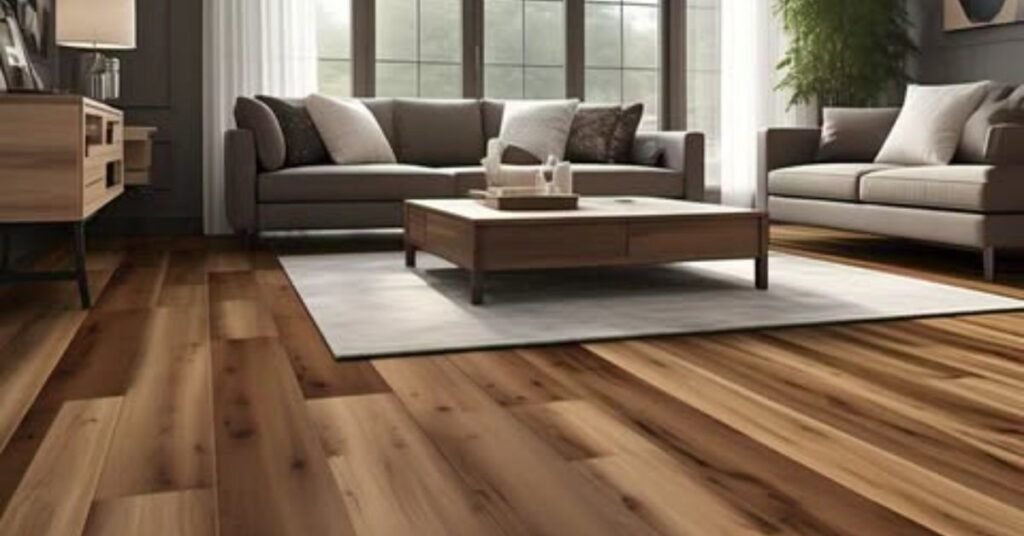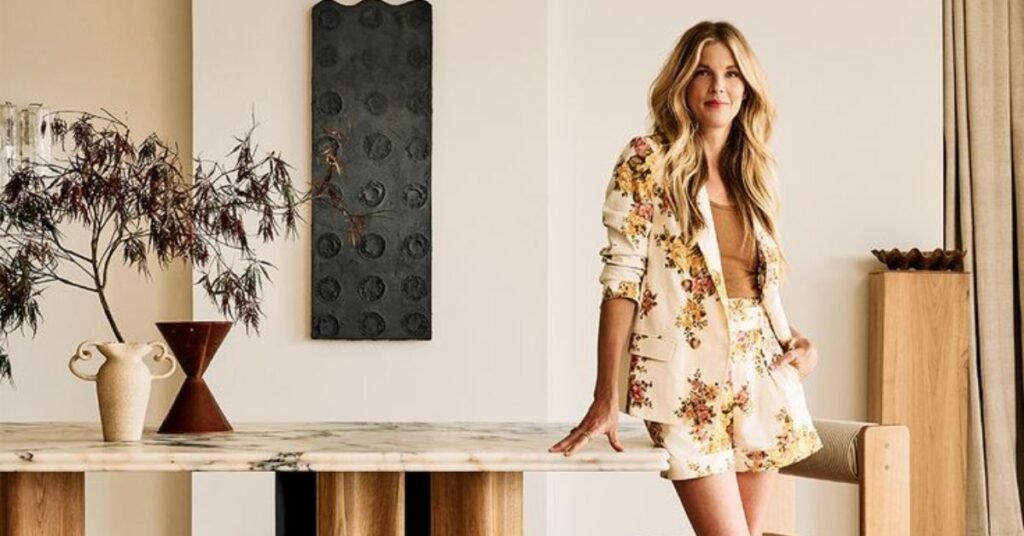
Laminate vs LVP: Choosing the Best Flooring for Your Home
When it comes to upgrading your property’s floors, the alternatives can be overwhelming. Among the most popular and financially best alternatives to standard hardwood are laminate and comfort vinyl plank (LVP). Both offer fashionable appearances and realistic benefits, but they differ in essential ways that would impact your selection. This article breaks down the important variations between Laminate vs LVP—shielding components like durability, water resistance, price, look, and the critical topic of laminate vs LVP—to help you determine which floor choice best suits your needs.
1. What is a laminate Vs LVP floor?
Laminate flooring is a synthetic floor product designed to mimic the presence of natural materials such as wood or stone. It is made of several layers connected through a demolition process.
In its core, laminate flooring has a high-density fiber plate (HDF), which provides structural stability. Above is a high-resolution photographic layer that repeats the shape of wood, tiles, or stone. At the top, clear protective wear protects against scratches, spots, and everyday use and tears.
Lamma floors are usually used in living rooms, bedrooms, hallways, and other areas with limited means. It is a popular choice for homeowners who want hardwood for a fraction of the cost. Usually, laminate floors cost $ 1 to $ 5 per square foot, making it a reasonable option for many budgets.
2. What is LVP (Luxury Vinyl Plank)?
Luxury Vinyl Plank (LVP) is a type of synthetic floor designed to mimic the appearance and texture of naturally busy wood, providing fantastic durability and resistance to water. Unlike laminate, which has a fiber plate center, LVP is completely made of vinyl fabrics, making it more flexible for moisture.
Laminate vs LVP usually consists of several layers: a stiff or flexible vinyl mid, a high-resolution photographic layer that mimics real wood or stone, and a hard wear layer on the top that protects against scratches, stains, and other damage. In addition, some LVP goods in the top class are characterized by an extra stiff core, such as stone plastic composite (SPC) or timber plastic composite (WPC), complemented by durability and comfort under the feet.
Thanks to your water-resistant properties, LVP is mainly popular in moisture-exposed areas that include kitchens, bathrooms, basements, and laundry rooms. It is also preferred for a wide range of setups and practical patterns. Price smart, LVP usually comes between $ 2 and $ 7 according to rectangular foot, depending on the first price and properties.
3. Appearance and Style
Both laminate and LVP are designed to copy the natural look of materials like hardwood or stone, but there are subtle differences in how they acquire that effect, and the way realistic they appear.
Understanding the debate around laminate vs LVP is essential for making an informed flooring decision.
Laminate flooring regularly has a more rigid, matte floor with distinct embossing that suits the broadcast grain pattern below, a function referred to as “embossed in register” (EIR). This offers laminate a surprisingly textured, practical wood-like experience underfoot. However, laminate can now and again mirror light in a way that famous its synthetic nature, specifically beneath brilliant or natural lighting.

LVP, on the other hand, generally offers a softer, warmer feel and can characteristic more superior printing generation and texturing. High-great LVP frequently consists of embossed surfaces and beveled edges that intently mimic actual hardwood planks. Since vinyl absorbs more mild than laminate, LVP frequently seems more authentic in a variety of light conditions.
The choice between laminate vs LVP can significantly affect your home’s aesthetic and practical qualities.
Ultimately, the laminate vs LVP decision should be based on your budget, lifestyle, and design preferences.
In terms of design variety, each floor’s sorts come in a huge range of colours, styles, and finishes—from rustic o.. K. and weathered barnwood to sleek stone and tile results. However, LVP tends to provide a broader selection of water-resistant wooden- and stone-look designs due to its greater flexibility in manufacturing.
4. Stability and wear resistance
In the ongoing discussion of laminate vs LVP, each flooring option has unique advantages that cater to different preferences and needs.
For homeowners considering laminate vs LVP, it’s crucial to evaluate the specific needs of each room in your home.
When it comes to durability, both laminate and LVP are designed to meet daily wear, but they perform differently under specific circumstances, especially when it comes to moisture and scratch resistance.
Scratch resistance:
The lamb floor is usually more resistant to scratches in the surface due to its hard layers, making it a solid alternative for homes with high-crown areas or pets. However, if you wear through the top layer, the laminate cannot be refined, and damage may be more noticeable. LVP is also scratch-resistant, especially high alternatives with thick wear layers, but it can show lighter scars during heavy use than laminate.
Moisture resistance:
This is the place where LVP moves out in laminates. LVP is complete waterproofing, which means it can be installed in bathrooms, kitchens, basements, and other moisture-prone areas without any concern. On the other hand, laminate, just water repellent. Long-lasting exposure to moisture can cause the fiber tray core, oblique or thin, making it less suitable for a humid environment.
Long life:
With proper care, both types of floors can last for many years. The laminate usually lasts about 10 to 15 years, depending on quality and foot traffic. LVP can last for 15 to 20 years or more, especially with a thick wear layer and a hard core with high versions. The waterproof nature also contributes to its long life in a wide range of atmospheres.
5. Installation
Both laminate and LVP are recognized for being exceedingly DIY-pleasant, however, there are a few variations in how they’re installed and what’s required to do the task properly.
DIY-Friendliness:
Laminate and most sorts of LVP have characteristic person-friendly click-lock systems that make them popular among DIYers. These systems permit the planks to snap together without the need for nails or glue, creating a “floating ground” that rests above the subfloor.
Click-Lock vs. Glue-Down:
Click-lock is the most common installation approach for each laminate and LVP, best for homeowners trying to keep on professional hard work prices. However, LVP also comes in glue-down types, specifically in commercial-grade products. Glue-down LVP presents more balance and is higher for larger or high-visitors regions, however, it’s greater labor-intensive and generally requires expert installation.
Subfloor Requirements and Underlayment:
Both floor kinds require a clean, flat, and dry subfloor. Laminate is greater sensitive to imperfections or uneven spots, which could cause the boards to shift or click when walked on. It additionally almost continually requires an underlayment for cushioning, noise reduction, and moisture safety.
LVP is extra forgiving on the subject of minor subfloor imperfections, mainly rigid-middle alternatives. While some LVP merchandise comes with a connected underlayment, others can also need a separate one, depending on the product and subfloor type (concrete vs plywood, for instance).
7. Cost Comparison
When deciding between laminate and LVP, value is mostly a figuring-out aspect. While each is budget-pleasant in comparison to hardwood or tile, there are variations in material, setup, and long-term cost.
Material Cost in step with Square Foot:
Laminate flooring normally costs between $1 to $5 in keeping with square foot, depending on thickness, brand, and excellent. LVP is slightly more steeply priced on average, starting from $2 to $7 consistent with square foot, with top-class alternatives (like rigid-middle or waterproof LVP) on the better end of that range.
Installation Costs:
Both laminate and LVP can be installed as DIY tasks, which helps reduce charges. However, in case you lease an expert:
Laminate installation normally costs $2 to $8 in step with square foot.
LVP installation ranges from $2 to $nine consistent with square foot, with glue-down options frequently costing more because of the labor involved.

Long-Term Value and Return on Investment:
LVP commonly gives better lengthy-time period value, especially in moisture-inclined areas, because of its waterproof nature and longer lifespan. It’s also much more likely to hold its look through the years with minimal threat of water harm. Laminate can nevertheless be an amazing investment in dry regions and offers robust scratch resistance, but its susceptibility to moisture can also limit its use and impact resale price.
Laminate may be greater cost-effective upfront, but LVP frequently provides more sturdiness and versatility, which may translate to a better return on investment in the end.
8. Environmental impact
When we consider yellow options, many owners have become more and more private about their environmental footprints. Both laminate and LVP have the development of top features in terms of recycled materials, VOC emissions, and simple environmental masks.
Laminate flooring:
The laminate is made using the use of larger and larger ways than general wood and resin fabrics. Although it can recycle, the approach can be compared with recycling centers, and the material is often not biodegradable. When it comes to VOCs (unstable natural compounds), laminated floors can at regular intervals emit formaldehyde and a type of chemical substances, especially in low-super products. However, many manufacturers now produce low-VOC and formaldehyde-unastried laminate options to meet fitness requirements.
LVP (luxurious vinyl board):
Laminate vs LVP is made in an important layer of PVC (polyvinyl chloride), which is not biodegradable and can be difficult to recycle. Like laminate, production technology for LVP can reduce VOC, but more and more modern, more eco-friendly manufacturers are fond of the production of low-VOC LVP products. There are also some “inexperienced” options made of recycled materials, even though they are very few.
Green certificate and environmental protection:
Both Laminate vs LVP can be placed with certificates that suggest better environmental requirements. For example:
Lammate: Find products with certificates such as Forest Stewardship Council (FSC), which guarantees that the wood used is constantly sourced, or CARB (California Air Resources Board) certification for low formaldehyde emissions.
9. Best Uses and Room Suitability
Choosing between Laminate vs LVP regularly relies on the precise rooms you propose to put in them in, as each floor kind excels in unique environments.
Here’s a breakdown of the remarkable uses and room suitability for each:
Laminate Flooring:
Laminate is a notable preference for dry, low-moisture regions because of its vulnerability to water damage. It plays properly in rooms with moderate foot traffic and those where moisture isn’t a problem.
Living Rooms and Bedrooms:
Laminate is proper for those areas due to its aesthetic enchantment and affordability. It provides a realistic timber or stone appearance and offers sturdiness against everyday use.
Hallways and Entryways:
Laminate’s scratch-resistant floor makes it a strong preference for hallways and entryways that collect heavy-footed visitors. Just be cautious of wet situations, inclusive of rain or snow being tracked in.

Dining Rooms and Offices:
For rooms where spills and moisture aren’t a large concern, laminate offers an elegant, budget-friendly answer. It’s easy to smooth and offers a warm, inviting look.
Kitchens:
Laminate can work in kitchens as long as moisture is managed. However, because laminate is not waterproof, water (from spills or leaks) needs to be wiped up right away to keep away from harm.
Bathrooms:
Laminate isn’t endorsed for bathrooms, because the moisture can cause the fiberboard center to swell, warp, and degrade.
Figure
Since basements are often moist, LVP here is a better alternative. The waterproof center method. This can struggle with a battle loss from below the ground with all moisture of any capacity.
Living room and bedroom:
Laminate vs LVP is suitable as a laminate in these rooms, providing a fantastic look similar to wood or stone. The soft revelation under the feet is a bonus, primarily in the bedroom with comfort topics.

Walking and Entrance:
In the residential room and kitchen, the flexibility of scratches and the spread of LVP make it a huge alternative for the hallway and the entrance area.
Summary:
Laminate vs LVP: Best for dry, visitors to medium-sized spaces such as rooms, bedrooms, and times. Due to moisture problems for moisture, it should be avoided in the bathroom, kitchen, and basement.
LVP: Population for excessive traffic areas, such as characteristics, the hallways for moisturizing regions, such as the toilet, kitchen, and basement. Laminate vs LVP also works properly in the living room and bedroom, where there are advocates for comfort and durability.
10. Pros and Cons Summary Table
Here’s a quick side-by-side comparison of the key pros and cons of Laminate vs LVP to help you make an informed decision:
| Factor | Laminate Flooring | LVP (Luxury Vinyl Plank) |
| Appearance | Mimics wood or stone with realistic textures; may show light reflections. | Very realistic wood and stone look; often softer feel underfoot. |
| Made of PVC; more challenging to recycle, but lower VOC options are available. | Highly scratch-resistant, great for high-traffic areas. | Scratch-resistant, but may show marks under heavy use. |
| Water Resistance | Not waterproof; moisture can damage the core. | Made of PVC; more challenging to recycle, but lower VOC options are available. |
| Durability | 10–15 years with proper care. | 15–20 years or more with proper care. |
| Installation | Easy DIY with click-lock system; may need underlayment. | Easy DIY with click-lock or glue-down options; can be more forgiving of subfloor imperfections. |
| Maintenance | Easy to clean, but avoid standing water and steam. | Very easy to clean; waterproof, can handle wet mopping. |
| Cost | $1–$5 per square foot for material; $2–$8 for installation. | $2–$7 per square foot for material; $2–$9 for installation. |
| Eco-Friendliness | Can emit VOCs, harder to recycle; some low-VOC options. | Made of PVC; more challenging to recycle, but lower VOC options available. |
| Best Uses | Living rooms, bedrooms, hallways, and dining areas. | Kitchens, bathrooms, basements, and high-traffic areas. |
| Subfloor Requirements | Requires a clean, dry, flat subfloor; underlayment needed. | More forgiving; may not need underlayment with rigid-core options. |
| Long-Term Value | Good value for dry areas, but may have a lower ROI in high-moisture spaces. | Fully waterproof, ideal for kitchens, bathrooms, and basements. |
Summary:
The laminate vs LVP debate is significant for those looking to enhance their living spaces with durable and attractive flooring options.
Laminate is a remarkable priority for areas of drought, high -place visitors such as living rooms and bedroom housing, which presents overweight and reduces the resale value. LVP shines in wet or moisture conditions with advanced water resistance and a longer life, kitchen, toilet, and basement.
As you navigate the laminate vs LVP options available, remember that each type has its own set of benefits tailored to various environments. Evaluating laminate vs LVP is crucial to making a flooring decision that best fits your home.
conclusion
In this evaluation, we have discovered the difference between significant things between laminates and LVP (luxurious vinyl board). Both provide a less expensive and fashionable alternative to hardwood, even though each excels in different fields. The laminate is perfect for dry areas such as rooms, bedrooms, and hallways, providing the presence of a realistic wood or stone and strong scratch resistance.
In addition, there is an extra value service-friendly desire for the owners of the household, which does not require waterproofing options and requires a clean-to-install space. On the other hand, Laminate vs LVP, kitchen, toilets, basements, and laundry rooms are better for moisture -sleeve areas. The waterproof nature, overweight, and dense experiences under the feet make it the first interest rate investment for areas that can be brought to exposure to spread, humidity, or high traffic.
Guidance to choose:
If you are looking for a fee-weighted yellow alternative for the areas with dried visitors on the high side, select laminates and prefer the appearance of a wise wood or stone without moisture protection. If you want a water-safe ground, choose LVP, which can spread moisture, moisture or be scattered in areas such as kitchens, lava, or basements, or if you need a more durable floor for long-term use.


